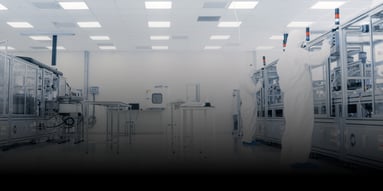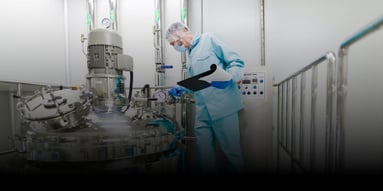Staying ahead of the competition: challenges and best practices for optimizing engineering organizational structures

The rise of Pharma 4.0 and digital technologies, the need for sustainability, and increased expectations from patients are pushing engineering organizations to reassess their structure and operations. As they strive to stay ahead of the competition and remain profitable, engineering departments must evolve their processes and workforce strategies to ensure efficiency, innovation, and customer satisfaction.
According to our Unispace Life Sciences Global Benchmarking Report Forefront , trends in engineering organizational structures are moving away from being site-driven and decentralized towards a hybrid mix with centralized functions. However, there are challenges in centralizing engineering organizational structures. In this report, we surveyed 180 global industry leaders, interviewed 12 blue-chip pharma companies, and featured insights from our roundtable dicussions hosted by The International Society for Pharmaceutical Engineering (ISPE) on topics unique to pharmaceutical engineering teams.
The effects of the war for talent
During our interviews a common theme emerged–engineering organizations are under pressure to fast-track projects, so they are evolving their process and operating outside of standard procedures. Part of this evolution, interviewees confirmed, is that companies are increasingly relying on outside consultants, while also leveraging global teams to work across site networks through roundtables and engineering committees. This use of an external workforce is, in part, due to the global war for talent, forcing organizations to share resources of an already strained talent pool between sites to support the evolving complexities of engineering.
Another main challenge is recruiting qualified personnel who specialize in complex initiatives such as Pharma 4.0, sustainability, and digital practices. This goes back to the constraints on experienced talent actively available for hire. Additionally, resource constraints can limit the potential of teams by creating a situation where multiple roles have been assigned to one individual or group, thus hampering innovation efforts.
Industry evolution: sustainability and automation
Two of the biggest trends we see from both interviews and surveys are related to sustainability and automation, two evolutions in the engineering field that are becoming increasingly relevant. Many engineering teams plan to add a dedicated sustainability function or roles, a practice that, in the next five years, we expect will be a key requirement. This focus on sustainability within the organizational structure, despite general struggles with talent acquisition, speaks to industry-wide feelings towards sustainability as necessary for organizational success.
Another trend to consider is the rise of automation. 40% of interviewees noted that they have or are currently bringing automation into the engineering department, a trend that is expected to continue in the next five years. Automation may serve to free up resources, allowing a centralized structure to more efficiently manage across sites.
Best practices
For companies to continue their initiatives and projects over the next five years, there are certain best practices that should be implemented regarding engineering organizational structures. First, organizations should focus on attracting talented individuals who specialize in these initiatives by offering competitive salaries and providing a work environment that encourages innovative thinking. Secondly, efficient resource management processes should be put into place so that each team has enough personnel available without having too many people spread out across different tasks, thus minimizing redundant efforts, and enabling more focused working groups dedicated solely towards specific goals or objectives. Finally, cross-functional teams should be strategically created to leverage various skill sets from different disciplines while ensuring effective communication within all levels of the organization, which will create a positive atmosphere necessary for innovation within teams as well as throughout the company.
Looking to the future
Overall, engineering departments need an organizational structure that takes into account both current trends related to Pharma 4.0, sustainability, and digital practices as well as future changes that may occur such as additional resource restraints, new talent pools becoming available in certain areas/markets, and automation in the workforce. By implementing best practices, companies can ensure that they have an optimized organizational structure that enables them to take advantage of new opportunities while remaining agile enough to respond quickly when needed either domestically or globally.
Learn more about how pharmaceutical companies are optimizing their engineering organizational structures.


.jpg?width=383&height=348&name=Benchmarking%20Web%20Article_Digital%20(1).jpg)